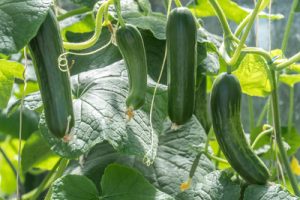Machinery and Equipment Guide
 Machinery and equipment required for cucumber production will vary by a grower’s preferred production method and operation size. The following discussion shares basic machinery and equipment needs for cucumber production. Depending on a grower’s operation size, expertise and previous machinery investments, the grower must determine whether to purchase and operate the equipment, engage a custom service provider or possibly rent and operate the necessary equipment.
Machinery and equipment required for cucumber production will vary by a grower’s preferred production method and operation size. The following discussion shares basic machinery and equipment needs for cucumber production. Depending on a grower’s operation size, expertise and previous machinery investments, the grower must determine whether to purchase and operate the equipment, engage a custom service provider or possibly rent and operate the necessary equipment.
Machinery and Equipment Needs
Cucumber producers must use tillage practices that will produce a smooth, firm seedbed. A good seedbed contributes to a good plant stand. Additionally, tillage operations should work planting sites to an 8-inch depth at the minimum. To prepare cucumber planting areas, growers may start with fall plowing. Following the fall plowing with disking two times or three times during early spring will create a good seedbed. Producers could choose from other tillage practices, depending on their specific needs. For example, if a planting site has crop residues, then disk before plowing. With tillage operations in that order, residue breakdown will accelerate. For planting sites with a hardpan, subsoiling may be beneficial. To smooth the planting area, use a tine harrow and smoothing board or rototiller.
A planting area designed to feature raised beds, plastic mulch and drip irrigation would support good growth and high yields. The table below assumes that a producer would adopt all three practices — construct raised beds, lay plastic mulch and install drip irrigation — to encourage high production on his or her operation.
To plant cucumbers by seed, choose a precision seeder, which can minimize the seed cost investment and enhance yields. For operations that lay plastic mulch, they can use a mulch seeder when planting. If producers choose to plant cucumbers from transplants, then they would need access to a vegetable transplanter. This guide assumes that an operation would grow cucumbers in the field from seed.
For weed control, options include applying herbicides, laying plastic mulch and using shallow mechanical cultivation. Alternatively, producers may choose hand hoeing. This guide assumes that spraying herbicides and installing plastic mulch would control weeds. Administering insecticide, fungicide, herbicide and foliar fertilizer applications may involve using a boom sprayer or air-assisted sprayer.
Harvesting cucumbers relies on hand labor picking at frequent harvest intervals. On average, assume that hand harvests would be necessary every other day. Post-harvest, remove field heat. Forced air systems work well. For longer term storage, ensure that cucumbers have dedicated space away from crops that release ethylene. In harvested fields, tilling the area would encourage old cucumber vines and fruit to decompose quickly. The tillage and subsequent residue breakdown may help to reduce disease risk.
Equipment and Machinery Needs for Cucumber Production
| Tractor | X |
| Disk | X |
| Plow | X |
| Subsoiler | X |
| Rototiller | X |
| Bed shaper | X |
| Mulch layer | X |
| Drip-irrigation system | X |
| Precision mulch seeder | X |
| Boom sprayer | X |
| Mulch lifter and winder and drip tape receiver head | X |
| Forced air cooling system | X |
| Cold storage | X |
Sources
Kaiser, Cheryl, Matt Ernst and Shawn Wright. 2014. Cucumber. University of Kentucky. Lexington, KY 40506.
Kelley, William Terry, ed. 2000. Commercial Production and Management of Squash and Cucumbers. University of Georgia. Athens, GA 30602.
Motes, Jim, Warren Roberts, Jonathan Edelson, John Damicone and Jim Duthie. Slicing Cucumber Production. Oklahoma Cooperative Extension Service. Stillwater, OK 74074.
Orzolek, Michael, Lynn F. Kime, Steven M. Bogash and Jayson K. Harper. 2010. Cucumber Production. Penn State Extension. State College, PA 16801.
Schultheis, Jonathan. 2000. Fresh Market Production Cucumbers. North Carolina Cooperative Extension. Raleigh, NC 27695-7602.